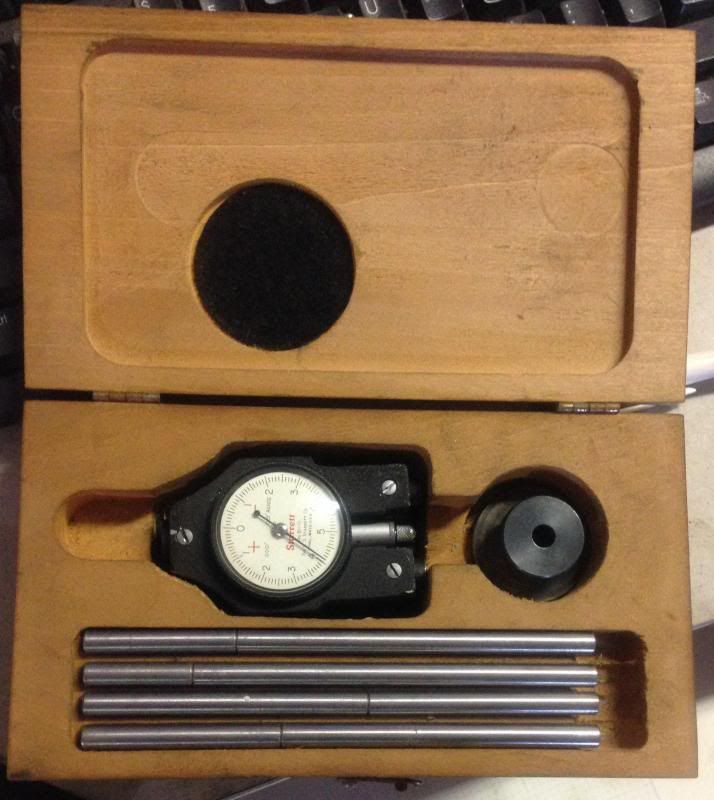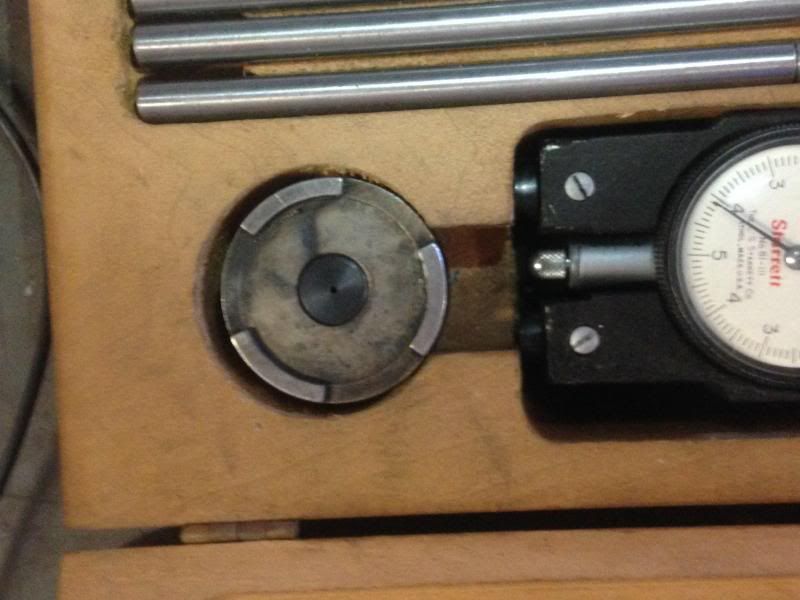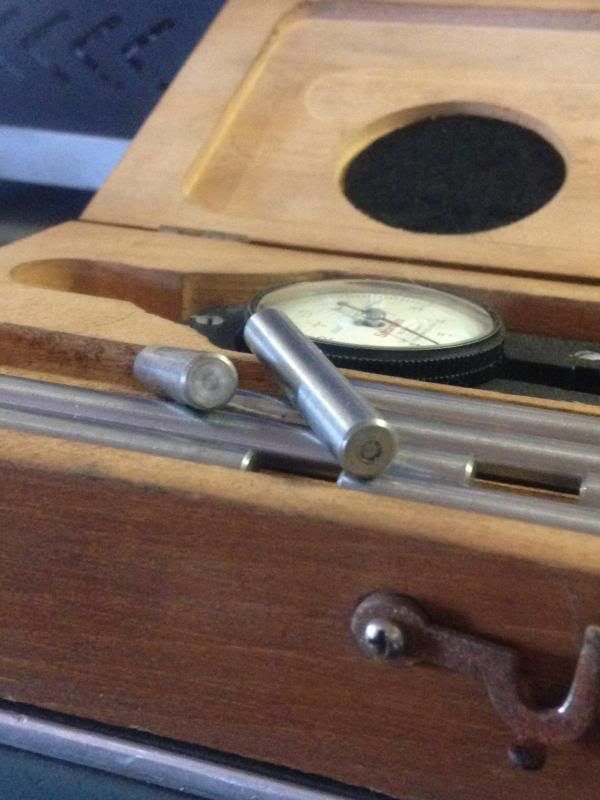TGTool
Titanium
- Joined
- Sep 22, 2006
- Location
- Stillwater, Oklahoma
Someone I know asked me about this gage, which someone gave him, but he doesn't know what it's designed for. My first thought was a cylinder gage, but on second look I'm not so sure.
The indicator is a tenths reading head with .025" travel. The head also has two spring loaded buttons adjacent to the plunger. In the right end of the case is a foot which has the rim on the bottom relieved to leave three feet and the rods fit into the foot and the top of the gage head. Since the rods are in roughly half inch increments it can't be general purpose since there's not enough travel. In addition, the two spring buttons are flat faced, not rounded so it wouldn't adjust to a bore. Jig borer setup and rods maybe?

The indicator is a tenths reading head with .025" travel. The head also has two spring loaded buttons adjacent to the plunger. In the right end of the case is a foot which has the rim on the bottom relieved to leave three feet and the rods fit into the foot and the top of the gage head. Since the rods are in roughly half inch increments it can't be general purpose since there's not enough travel. In addition, the two spring buttons are flat faced, not rounded so it wouldn't adjust to a bore. Jig borer setup and rods maybe?





